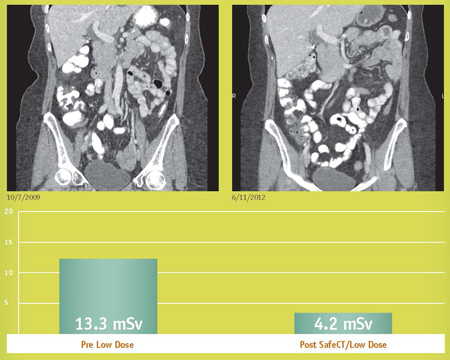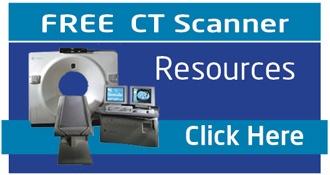by Whitney L.J. Howell
Since August, Imaging Healthcare Specialists (IHS) in San Diego has achieved what they say is one of the lowest dose levels for CT scans nationwide, in some cases reducing exposure by 90 percent. IHS chief executive officer Jon Robins, MD, credits the practice’s long-standing tradition of being an early adopter of technology with this success. Last fall, the practice paired iterative reconstruction software with industry dose guidelines. Now, an abdominal CT scan with and without IV contrast, for example, now averages a dose of 3.5 to 5 mSv, compared with 11 to 13 mSv, Robins said. Diagnostic Imaging spoke with Robins about how they did it and the impact on the practice.
Why did IHS pursue such a low-dose business model?
After the series of accidental and exceptionally high over-exposures that gained national attention, we, and all other responsible radiology practices re-examined our methods and asked ourselves piercing questions. Why do we use the levels we do, and are those levels necessary? Would there be ways to do what we do without significant technical changes and still reduce dose? We evaluated all the premises behind what we do, and we realized that, using all the same equipment, that there were many things we could do to preserve image quality and value while reducing dose. This became a national goal through the American College of Radiology’s Image Gently and Image Wisely campaign, but we did it earlier and in a way that resulted in significantly reducing dose without any sense at all of compromising what we do.
How has this impacted how your practice lowers doses?
Iterative reconstruction is actually a new capability that makes it possible to diminish dose and still end up with the same quality exam. Our dilemma was whether to purchase new scanners that had this ability or to use add-on software that would allow us to avoid the three- to five-year phase-in period that many practices have when faced with acquiring new technology. We found a product called Safe CT, and we put it in a central location so all our CT scanners could link to it. The ACR put their Dose Index Registry in place, and we just received our first six month report. We are at the absolutely lowest end of dose in the country.
From a practice management perspective, how have these changes affected your staff, workflow, and patient relations?
Internally, this hasn’t, in any meaningful way, negatively impacted our business model or the services we provide to patients. It hasn’t raised our costs, and our overhead has remained the same except for the expenditure to acquire the add-on technology. We haven’t added additional staff; there’s been no lengthening of exams; patients don’t have to be prepped differently. It’s been seamless and invisible in the background.
How would you advise other practices that are looking to follow what IHS has done?
IHS has a history of being an aggressive early adopter of the technology that we believe in. But the mindset of many people is that the new technology is what they want, but they’ll buy it when they need a new scanner. Everyone wants to lower dose, but they have to decide for themselves the timing and how quickly their economic standing will allow them to move. There’s no message about the best way to do this. It takes people a while to figure out how and when to make technology changes. Each individual practice has to look at how they would make changes, how they could adopt the available technology, and what they could gain from doing so.
This article was originally from Diagnostic Images Vol No. March 7, 2012
For more information Contact Us!
Some blogs you may be interested in:
- Deliver the Right CT Dose!
- Concern Over Radiation Risks from CT Imaging?
- Trends: Managing and Reducing CT Radiation Doses
- A Successful Dose Management Strategy Takes Teamwork




